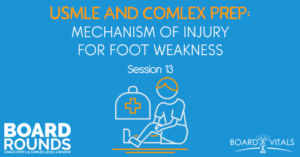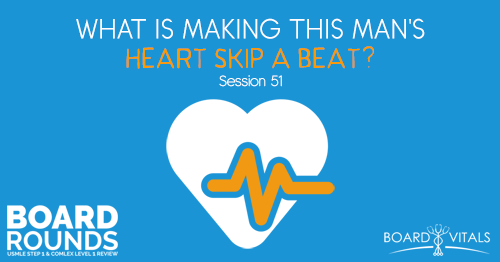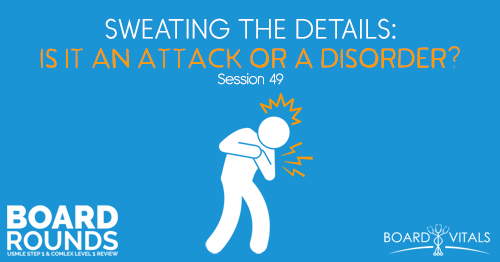Apple Podcasts | Google Podcasts

Session 13
We have a great musculoskeletal question for today. As always, we’re joined by Dr. Andrea Paul from Board Vitals.
[01:30] Question
A 27-year-old male is undergoing evaluation for left foot weakness. On his exam, he’s unable to curl his toes. He has one of five strength with plantar foot flexion and five out of five with dorsiflexion. His foot is everted at rest and he has decreased sensation on the sole of his foot.
What was the most likely mechanism of his injury?
(A) Fibular neck fracture
(B) Hip dislocation
(C) L3 disc dislocation
(D) Knee trauma
(E) Pelvic fracture
[03:45] Thought Process
If you have a fibular neck fracture, this will injure your perennial nerve where you will have lots of dorsiflexion and the sensation on the dorsum of the foot. So choice A is out
L3 is too high up as well. This involves the sciatic nerve. The patient would have felt a neuropathic pain down the back of the leg.
Hip dislocation is unlikely because the patient is a 27-year-old. This is pretty uncommon. But if he did, then that would have affected the gluteal nerve. This would make it difficult for him to stand up or extending his hip.
Pelvic fracture would be more of the femoral nerve, affecting hip flexion and extension.
The knee trauma is the right answer here, If they had said posterior knee trauma, this would have made the exam a little easier. Specifically, this is a tibial nerve injury. It typically runs right down the middle of the back of the popliteal fossa.
So any knee injury is going to affect the nerves and vessels that run through there. When you have an injury in the tibial nerve, the commonplace for pain is the back of the knee. This is a common sports injury, although other things can cause this too. One example is when you’re wearing shoelaces being tied around the calf. Casks can cause this as well as ankle fractures.
[08:47] Tibial Nerve Affecting the Knees and Ankle
It’s asking what’s “most likely” so just keep that in mind. And typically, this is a very common injury known as the tibial tunnel syndrome. It most commonly occurs at the back of the knee. The tibial nerve passes right behind the medial malleus before it goes around the foot so the ankle area would be affected here too.
[11:44] Board Vitals
Check out Board Vitals for some help with your Step 1 or Level 1 exam. They have the 6-month, 3-month, or 1-month access to their QBanks and Practice Tests. Get custom practice test as they simulate real test conditions. Use the promo code BOARDROUNDS to save $50 off your purchase.
Links:
Board Vitals (Use the promo code BOARDROUNDS to save $50 off your purchase)
SEARCH SITE
LISTEN FOR FREE











